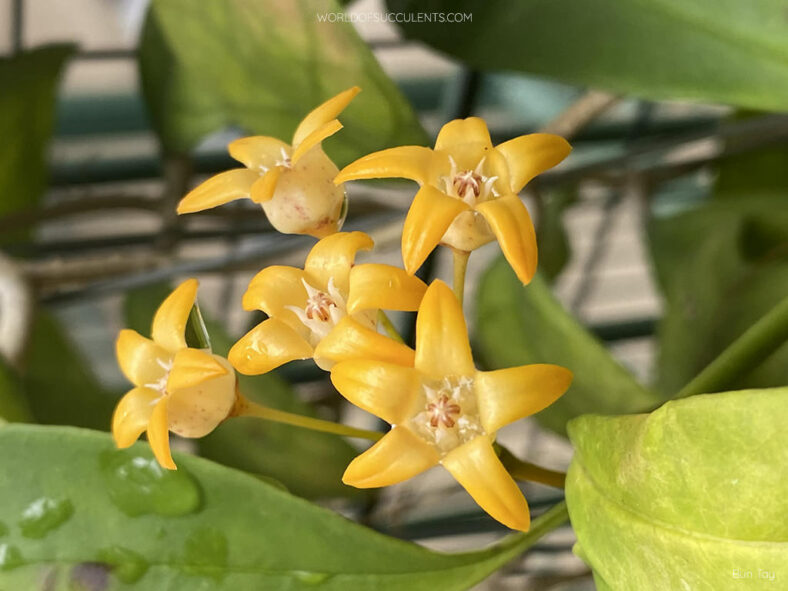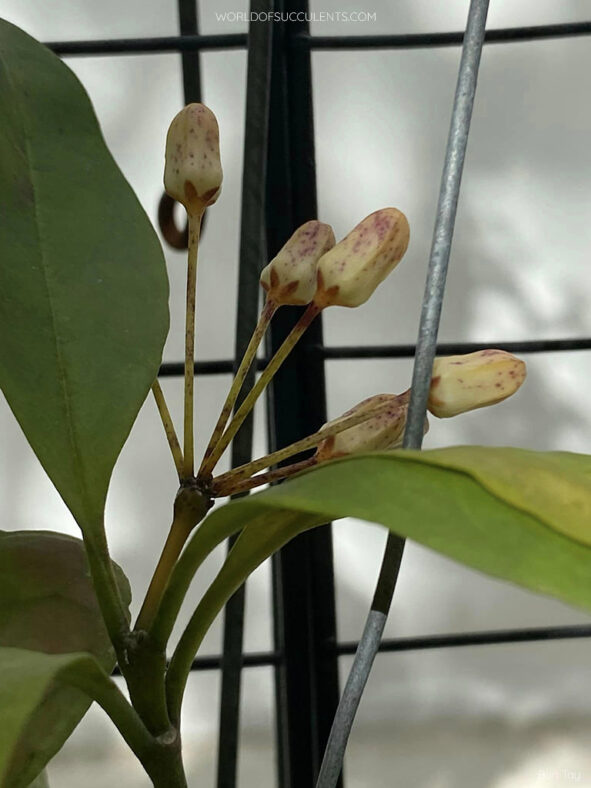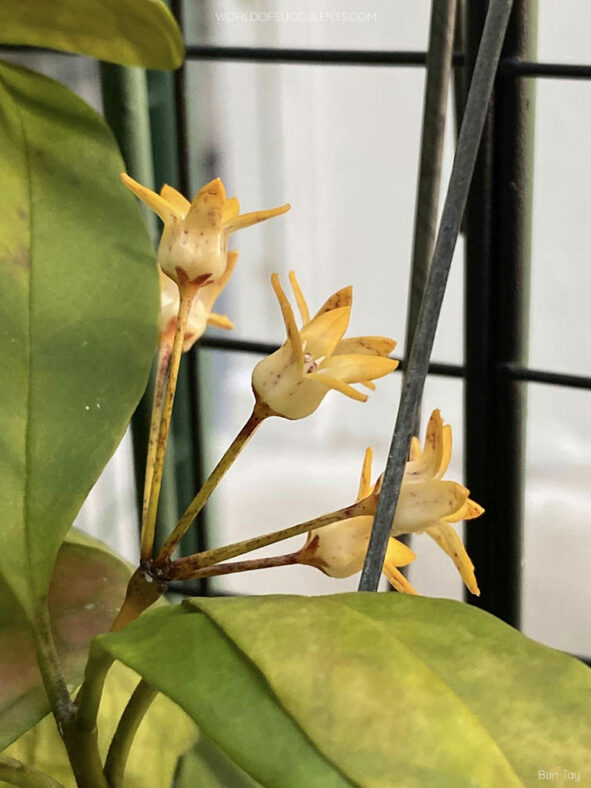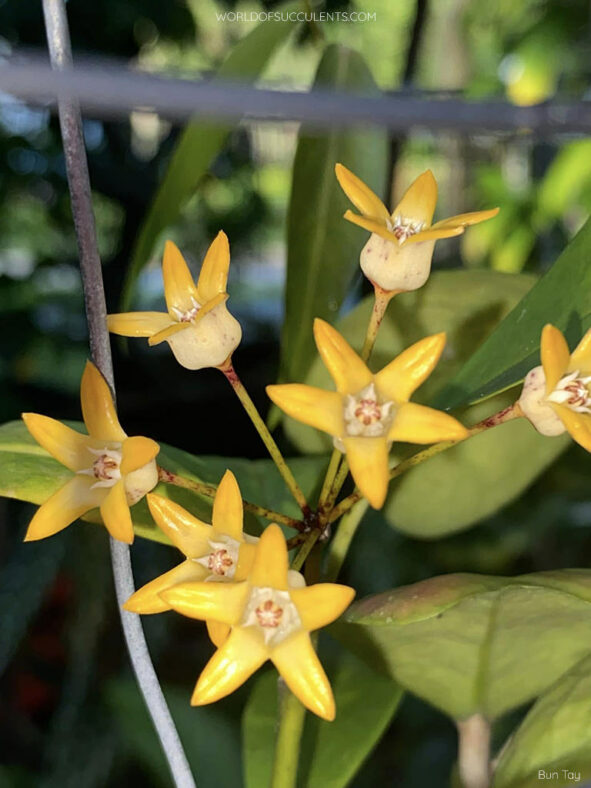Hoya occultata is the second species of Hoya with a shrubby habit from Sulawesi. It resembles Hoya irisiae, which is endemic to the Philippines.
Scientific Name
Hoya occultata S.Rahayu & Rodda
Scientific Classification
Family: Apocynaceae
Subfamily: Asclepiadoideae
Tribe: Marsdenieae
Genus: Hoya
Etymology
The specific epithet "occultata" (pronounced ock-ull-TAY-tuh) means "concealed, hidden, having been concealed" and refers to the position of the inner corona, enveloped by the corolla and therefore hidden from sight.
Origin
Hoya occultata is native to Indonesia. It is found only in one locality, in Aralle, West Sulawesi.
Description
Hoya occultata is an epiphytic shrub with pale brown stems that bear mid-green leaves with pinnate venation. The stems are erect or suberect and can grow up to 20 inches (50 cm) long and 0.25 inches (0.6 cm) in diameter. The leaves are elliptic-lanceolate, pale green underneath, and can measure up to 4 inches (10 cm) long and 1.4 inches (3.5 cm) wide. They are attached to the stem by a cylindrical petiole that is channeled above and can grow up to 0.3 inches (0.8 cm) long.
During the summer, Hoya occultata produces umbels of up to 15 flowers with urn-shaped corolla with free-spreading lobes. The flowers can reach a diameter of 0.6 inches (1.5 cm). The corolla lobes are sparsely pubescent, white at the base, turning dark yellow at the tips on the inside. Outside, they are smooth and yellowish-cream. The corolla envelops the inner corona and, therefore, hides from sight, the main characteristic distinguishing this species from the otherwise similar Hoya irisiae. The fruits are blackish spotted follicles measuring up to 4.2 inches (10.5 cm) long and 0.15 inches (0.4 cm) in diameter.

How to Grow and Care for Hoya occultata
Light: Even if this plant can tolerate lower light levels, it may become weak and leggy if the light is too low, producing fewer leaves and flowers. Therefore, it is best kept indoors in bright, indirect sunlight.
Soil: Well-draining soil that provides excellent aeration and does not hold too much water is most important for growing a healthy plant.
Temperature: Hoya occultata thrives in hot and humid climates, so keep it away from drafty windows and doorways during the colder months. It grows best in USDA Plant Hardiness Zones 11a to 11b, with average minimum winter temperatures ranging from 40 to 50 °F (4.4 to 10 °C).
Watering: This plant is sensitive to overwatering. Soak the soil thoroughly during the spring and summer, but allow it to dry out before watering again. Otherwise, you will increase the risk of root rot, and your plant will not be happy. It is relatively dormant during the fall and winter and needs only moderate watering.
Fertilizing: While Hoya occultata is not a particularly heavy feeder, it can benefit from half-strength high-potassium fertilizer every two weeks during the growing season.
Repotting: As an epiphyte, this plant has shallow root systems and does need a deep container. It also does not require frequent repotting. It prefers to be slightly rootbound, so repot it in spring only if it outgrows its container.
Propagation: Although layering is the easiest way to propagate Hoya occultata, the most popular method is through stem cuttings. Using leaf cuttings can be more challenging, while starting it from seeds is the simplest but the most time-consuming method. For best results, take cuttings only when the plant is actively growing and sow the seeds in spring and summer.
Learn more at How to Grow and Care for Hoya.
Toxicity of Hoya occultata
Hoya occultata is considered non-toxic, so having it around kids and pets is safe.
Links
- Back to genus Hoya
- Succupedia: Browse succulents by Scientific Name, Common Name, Genus, Family, USDA Hardiness Zone, Origin, or cacti by Genus
Photo Gallery
Click on a photo to see a larger version.


